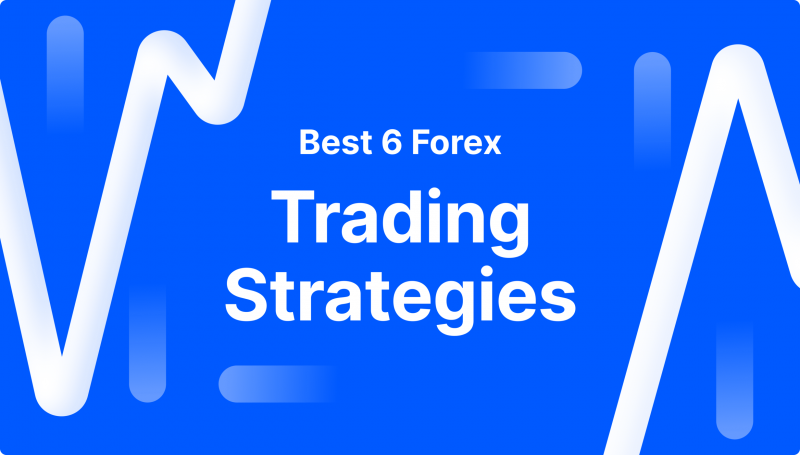Forex trading is a high-risk business. Successful Forex traders must be aware of their risk. Here are 10 ways of managing risk and protecting your investment capital.
Create Stop Loss Orders for every Trade
1. Stop-loss contracts close automatically when the value of the market has reached certain levels, thus limiting losses. Stop-loss orders ensure that you do not be able to lose more money than your budget will allow if you are trading against yourself. When you are first opening a trading position, always set an amount of stop loss.
2. Define Risk per Trade
Limit the risk of each trade. It is generally recommended to limit it to no more than 1-2 percentage. This allows you stay in the market even when you lose streaks.
3. Use Proper Position Sizing
The size of your position is based on the amount of currency you purchase or sell when you trade. Your position size must be adjusted based on the size of your account, the risk you take when you trade, and how far you are from your stop-loss. In this case when the stop-loss amount is larger than the size of your account, you must reduce the position size to ensure a steady level of risk.
4. Avoid Over-Leveraging
High leverage increases both gains and loss. Brokers usually offer high amounts of leverage for beginners, but they should choose low leverage. If you lose a trade the leverage could quickly drain your account. It's recommended to start with a lower leverage (1:10 and below) until you gain knowledge.
5. Diversify Your Trades
Don't invest your entire money in a single currency pair. Diversifying your trading with different timeframes and pairs can reduce the risk of losing funds due to unanticipated events. Avoid too much diversification because it may dilute the focus of your trading too thinly.
6. Create the Trading Plan including Risk Limits
A trading strategy that is clear in its rules on entry and exit as well as risk tolerance helps you maintain discipline. Set weekly or daily limit on your risk, like not putting your money at risk by more than 5percent of your account each day. If you reach your limit, take a break to reconsider your strategy instead of trading in anger or frustration.
7. Use Trailing Stops to Lock in Profits
A trailing stop is an evolving stop-loss which adjusts when the market shifts to your advantage. This allows you to gain if the market changes around, but also give your trade a chance to grow in the direction of growth. This is a great way to keep profits while not ending the trade.
8. Be aware of your emotions and stay clear of revenge trading
Emotional traders often make poor choices or take excessive risks. Insecurity, anger and greed can lead to impulsive trading or assuming more risk than planned. Avoid revenge trading after an unsuccessful trade or trying to recover all losses in one go. Be sure to limit the loss's growth by adhering to your risk limit and strategy.
9. Avoid Trading During High-Impact News Events
Extreme market volatility can be caused by high-impact events like announcements by central banks or economic statements. If you're unfamiliar in trading news, either end your position or stop trading prior to and following important announcements. Prices can spike and cause unanticipated losses.
10. Keep a Trading Journal in order to analyze your mistakes
You can learn a lot from your losing and winning trades if you keep an account. It is important to record the details of every trade. This should include the reasons that led you to enter the market, the risk involved, your stop-loss settings, and how it turned out. Periodically reviewing your journal reveals patterns in your failures and achievements, which will help you improve your risk management over time.
Forex trading involves lots of risk management. It is essential to identify profitable opportunities as well as manage your risks. Follow these tips to protect your trading capital, reduce losses and develop a sustainable approach. Check out the top rated https://th.roboforex.com/ for blog tips including good forex trading platforms, best forex trading platform, united states forex brokers, forex trading forex trading, best broker for currency trading, forex trading brokers list, forex broker, forex trading app, forex exchange platform, fx forex trading and more.

The Top 10 Strategies To Help You Comprehend And Leverage When Trading Online
Leverage is a powerful Forex tool that can boost the potential for profits as well as losses, is a crucial part of the trading process. Here are ten top strategies to help you comprehend and make the most of leverage: 1.
1. Learning the fundamentals of leverage
Leverage is a way to manage a position larger than your capital. A leverage ratio of 1:100, for instance is a way to control 100 dollars in the market for every dollar you have. The same leverage can also increase your losses and gains.
2. Be aware of the risks associated with high leverage
Leverage increases both profits and losses. If you leverage 1:500, a 0.2 percent price decline can wipe the entire value of your investment. The high leverage appeals to many beginner traders however it could cause significant losses if not careful.
3. Start with Low Leverage
Begin by using a smaller leverage, such as 1:10 or even 1:20, in case you're just beginning to learn about Forex. This allows you to manage your losses and build confidence and reduce the risk of losing a large portion of your capital.
4. Calculate the Margin Needed
Margin requirements are required for every leveraged trade. This is the amount you need to maintain in your account prior to opening the position. In this case, a $10,000 transaction requires only $100 of margin when leveraged 1:100. Make sure you know these rules to avoid margin calls and liquidations.
5. Leverage is a good tool to use when you are implementing your trading strategies.
Short-term, high-frequency trading could gain from moderately leveraged thanks to a tighter stop-loss position. Conversely, longer-term trades could benefit from a lower leverage because these positions are more enduring and subject to larger price fluctuations. It is possible to tailor the leverage for each trade based on its timeframe and purpose.
6. Set strict stop-loss orders for each trade
Stop-loss options limit the loss of a leveraged trade and safeguard your investment in the event that the market is swayed against you. Stop-loss orders must be placed at a level of risk that aligns with your tolerance to loss. This discipline will help you avoid losses spiraling out-of-control.
7. Monitor Your Leverage Ratio Regularly
It is important to monitor your position regularly to ensure that you don't accidentally overleverage. Reducing or closing certain trades can help maintain a reasonable leverage ratio.
8. Use a Margin Calculator.
A lot of brokers offer margin calculators as well as tools to assist you in determining how much leverage is being utilized, as well as the amount of margin required to make any specific trade. These tools allow you to comprehend your risk and help you avoid excessive use of leverage.
9. Be aware of regional leverage Limitations
Different regulatory guidelines determine the maximum leverage allowed in various regions. Retail traders in the U.S. are limited to 1:50 leverage, while in Europe, leverage on major currency pairs is limited to 1:31. Pick a legal leverage ratio to limit risk and be in compliance with regulations.
10. Re-evaluate Leverage based on Market Conditions
Market conditions can undergo rapid change, and they can impact the risk profile of leveraged trading. During volatile market events or important news releases, you should consider decreasing your leverage or changing your exposure. Lowering leverage in times of uncertainty could protect you from unexpected, large price fluctuations.
In short, leverage should be approached with a clear understanding of both its advantages as well as its potential risk. You can maximize the benefits of leverage while minimizing the risk by using it in a responsible manner by establishing a protective stop-loss order, and choosing the appropriate ratio of leverage. Check out the top rated for blog info including best forex trading platform, best forex trading platform, good forex trading platforms, forex trading platform, top forex brokers, fx online trading, best rated forex brokers, best forex brokers, forex trading forex trading, best currency trading app and more.

Top 10 Financial And Personal Goals Tips When Considering Trading In Forex Online
Forex trading is only successful if you have clearly defined financial and personal goals. A well-defined goal helps keep your trading focussed and disciplined. It also helps you align your trading to your overall financial goals. Here are ten suggestions for setting and meet your financial and personal objectives when trading online.
1. Define Your Financial Objectives Clearly
Make specific financial goals like an income goal or annual return goal. Determine if you wish to increase your capital and additional income, or wealth preservation. Clare goals help you align your strategies with the desired results you want to achieve.
2. Create a Realistic Timeframe
Trading in Forex requires the time to study how to use it, practice and improve. Set short-term and medium-term goals in order to keep track of your progress. This can help you avoid unrealistic expectations. You can establish a short-term trading strategy and an end-of-year return goal.
3. Determine Your Risk Tolerance
Check your comfort level with risk and make sure your goals align with it. Be prepared for more volatility and losses when, for example, you aim for high returns. Understanding your risk tolerance will aid you in setting goals and select strategies that won't exceed your comfortable level.
4. Plan a Capital Allocation Strategy
Choose the amount of your total finances you are willing to invest in Forex trading. Don't invest more than you can afford, since this can affect your financial stability. It is then possible to make sure that trading doesn't interfere with essential money you'll need to pay savings, bills, or any other personal obligations.
5. Focus on Skill Development as a primary goal
Instead of focusing solely on financial gains, make it a goal to increase your skills and knowledge in trading. Examples of developing your skills goals are mastering a certain trading strategy, enhancing your risk-management, or gaining the ability to manage emotions during stressful times. Skills compound over time and produce more consistent results.
6. Prioritize Consistency Over Large Wins
Beginning traders often seek to earn huge profits quickly however, those who have been trading for a while are aware that steady, regular gains last longer. Set a monthly goal of achieving an achievable percent increase. Concentrating on steady results will allow you to avoid high-risk behavior and build a solid track record.
7. Be sure to monitor and evaluate your performance regularly
It is a good idea to keep a diary of trades where you will record all your trades, analyze the outcomes, and consider lessons learned. Monthly or quarterly reviews of your performance will help you improve your strategy, stay accountable to your goals and adapt your strategy.
8. Create a Behavioral and Psychological Goal
Trading requires mental discipline as well as control of emotions. Make goals that are based on mental factors. For instance, limiting impulsive trades or sticking to a program. These goals will help you build the ability to endure and maintain a disciplined approach.
9. Beware of comparison with others
Comparing your performance in trading against others could cause excessive stress and result in risky choices. Your goals should be based on your own personal growth and financial capability and not on the performance of other traders. Concentrate more on incremental improvements instead of beating other traders.
10. Define your exit strategy or financial timeframe
You should think about setting goals so that you could either stop trading or take profits. Also, evaluate your performance. In other words, when you reach a certain profit milestone, take some profits to enjoy or put them into a new investment. A "take-profit" measure can stop overtrading and help you appreciate your achievements.
Set and manage your financial and personal goals. Having clear and defined goals when it comes to trading Forex will help you stay disciplined reduce stress, and help you achieve lasting success. As you advance, alter your goals to reflect continual improvement, consistency, and personal accountability. Have a look at the top https://th.roboforex.com/about/activity/awards/ for site advice including forex best trading app, forex and trading, currency trading platforms, foreign exchange trading platform, forex exchange platform, best forex trading app, fbs review, fbs review, forex demo account, brokers for forex in usa and more.
